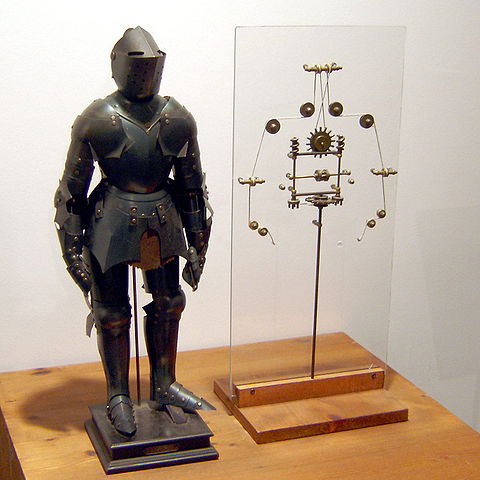
Japan’s international robotics show, iRex, features the latest and greatest from 400 robot manufacturers, and it gives visitors an excellent view of the Uncanny Valley — the point at which the similarity between robots and humans begins to creep us out.
One example is the robotic Leonardo Da Vinci, the first in a series of educational robots designed by the University of Osaka. The android looks and sounds eerily human, and it was the hit of the show.
Da Vinci designed a robot of his own, as it happens, a knight which moved independently, created for a pageant. Though there are no complete drawings recording Da Vinci’s design, roboticist Mark Rosheim used notes and drawings to recreate the robot at the beginning of this century, and the new model has been exhibited and featured in a Discovery channel film.
These robots have more in common with the clockwork toys which were so popular in the Renaissance and beyond than with industrial robots. Da Vinci built a clockwork lion as a present for the king of France, and life sized humanoid clockwork toys were popular enough that they inspired scenes in the famous ballet “The Nutcracker.”
Japanese robot designs are pushing the envelope. Things that are kind of like people, such as dolls and C3PO, appeal to human beings. Things that are way close to people but not quite people, such as corpses and zombies, are not so appealing.
Industrial robots, at least in the U.S., don’t flirt with lifelike effects. New collaborative robots are sufficiently humanoid to make people name them and pay attention to them, but the average industrial robot is nowhere near the uncanny valley.
It will be interesting to see whether Japan’s push for more human robots will affect American industrial machinery design.
